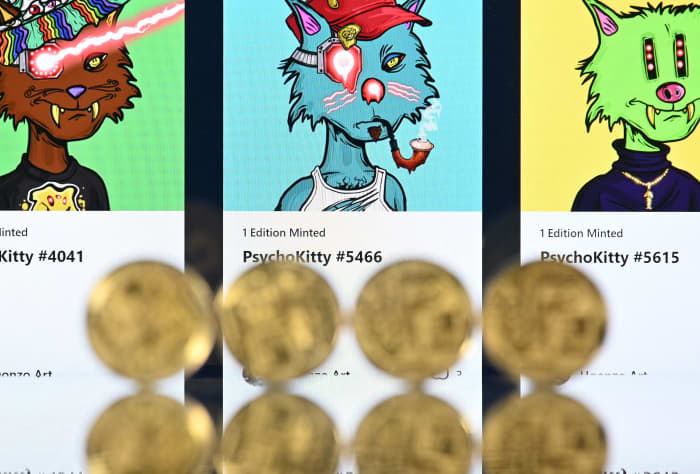NFTs have gained in popularity in ways that could be compared to the early days of the cryptocurrency frenzy.
The mainstream media is abuzz with success stories of artists going from rags to riches, and celebrities flaunting their newly acquired non-fungible tokens online.
While the hubbub has quieted down, NFTs aren’t just a passing fad. And they’ve highlighted some of the biggest problems of modern society.
The best example is a famous NFT project called Bored Apes Yacht Club.
Bored Apes Yacht Club (BAYC or Bored Apes) is a non-fungible token collection — 10,000 unique NFTs —built on the ethereum blockchain that features profile pictures of cartoon apes that are procedurally generated by an algorithm. The project has gained incredible popularity since its inception in 2021 and has made over $1 billion in sales so far.
Bored Apes have attracted about 11,000 unique owners who on average paid 84 ether ETHUSD,2.02%,or $284,999 per NFT. Therein lies the problem: Who has that kind of money to spend on something that can only be described as a status symbol?
Buyers are usually celebrities, wealthy investors or misguided “apes” — investors who splurge on an asset without doing any due diligence either for the fear of missing out on future gains, or simply for the thrill of it. The motivation to buy these NFTs has very little to do with actual art.
Here’s where I agree with Jonathan Jones of The Guardian, who in his piece on the NFT craze, says: “The Bored Ape boom, however, should put an end to any romanticism about NFT art. It puts the consumer experience first and has absolutely nothing to do with empowering artists. It’s all about the collector’s ego.”
He goes on to say: “Bored, emptied out, wrecked and proud of it. That’s how the NFT art investors all feel, apparently. And so they should. NFTs are not good for art. They are not liberating for artists. Instead, as the Bored Ape Yacht Club makes horribly obvious, they serve nothing but money. They are just simian poker chips that celebrate the thrill of the market. A purer form of capitalism has never existed.”
Generalizations are rarely true, and this one is no exception. These negative preconceptions hurt not only artists, but also connoisseurs. Therefore, it’s paramount to dispel them.
Investing Insights with Global Context

Neither all NFT art nor the artists are the same. In the past, making money as an artist was incredibly challenging, and for good reason.
Selling art requires a special connection between the artist, the work and the buyer. NFT technology and marketplaces facilitate this process and help artists get the exposure they need in order to share their vision with the world.
However, NFTs do much more than just facilitate sales. By the virtue of smart contracts, they allow artists to provide other goods and services for the buyer — existing and future ones.
With the proper infrastructure in place, many of these perks can be executed automatically, which puts NFTs and the accompanying marketplaces miles above similar web 2.0 services (think Patreon).
For example, an artist can invite fans to a live performance event where corresponding NFTs serve as a means of admission. The same goes for shipping physical copies of existing artworks or accessing locked-out parts of the artist’s website.
This way, the NFTs can become a part of an artist’s expression, helping him or her enrich a buyer’s experience. And I haven’t even mentioned the potential of using NFTs to tokenize real-world assets, like real estate, commodities and other physical goods.
Saying that all NFTs are bad is the same as claiming that all crypto projects are bad. This attitude stems either from a personal bias toward the analog or from the inability to understand the underlying technology and its capabilities.
Non-fungible tokens belong to a nascent industry that has taken the world by storm. At this stage, it may seem that it attracts only the wealthy and bored. As it matures, however, NFT technology will overcome its growing pains and show its full potential, powering the future global digital economy. Until then, what we’re seeing are merely glimpses of its vast potential.

 (1)
(1)
 (0)
(0)
